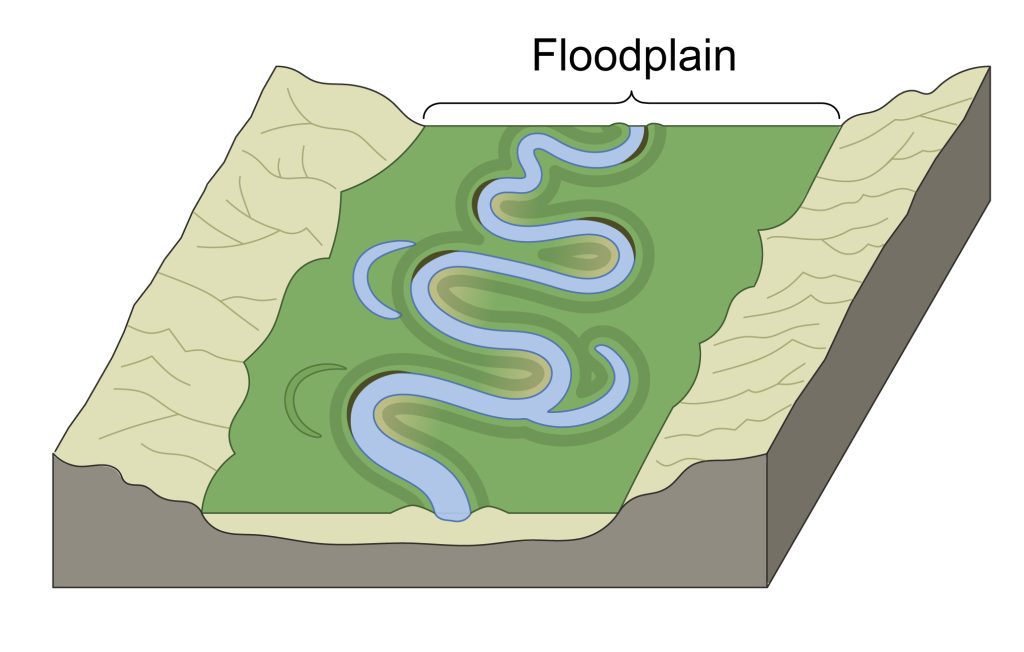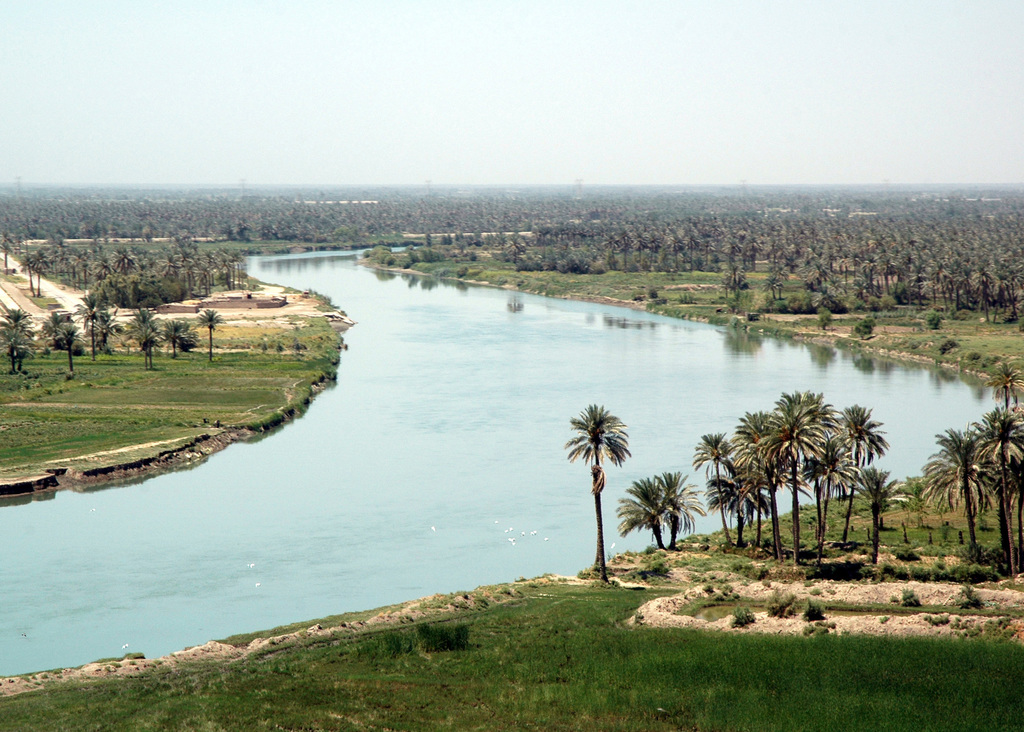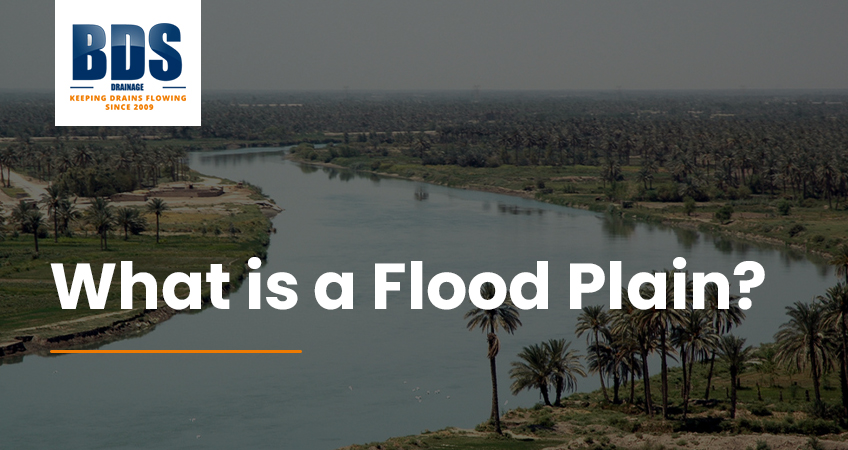Flood plains are flat or nearly flat areas adjacent to rivers and streams that experience occasional or periodic flooding. These flat areas surrounding rivers and waterways consist of two parts: the floodway and the flood fringe. They play a crucial role in the natural ecosystem, but they also present unique challenges and considerations for homeowners, urban planners, and commercial property owners.
In this blog post, we will explore the significance of flood plains, how they form, their environmental roles, and their impact on urban planning and property management. By understanding these aspects, you’ll be better equipped to manage and mitigate the effects of flood plains on your property.
Understanding the formation and function of flood plains

Flood plains are formed by the natural processes of river and stream activity. Flood plains consist of the floodway and the flood fringe. Over time, the movement of water in the main river channel erodes the banks of rivers and deposits sediment, creating flat, low-lying areas that can be prone to flooding. This continuous cycle of erosion and deposition shapes the landscape, resulting in flood plains that can vary in size and characteristics. Sediment deposited over time elevates the land out of the river bed, leading to the creation of banks and fluvial terraces.
The primary function of flood plains is to absorb and store excess water during periods of heavy rainfall or snowmelt. The flood fringe acts as a natural buffer, absorbing floodwater during periods of high water flow to help mitigate the risk of downstream flooding. This natural process helps to regulate water levels and prevent flooding in populated downstream areas. However, when flood plains are disrupted or altered by human activities, such as construction or improper drainage management, their ability to perform this function can be compromised, leading to increased flood risks for surrounding properties. Flood events can significantly impact flood plains, altering their structure and function.
Drainage experts play a vital role in managing flood plains and mitigating their negative impacts. They can assess the specific conditions of a flood plain, design and implement effective drainage systems, and provide ongoing maintenance to ensure that water is properly managed and directed away from vulnerable areas.
The environmental role of flood plains in ecosystems


Flood plains are not only important for managing water levels but also play a significant role in supporting diverse ecosystems. River meanders contribute to the formation of flood plains by eroding and depositing sediments as the river curves from side to side. These areas provide critical habitats for various plant and animal species, contributing to biodiversity and ecological balance. The periodic flooding of flood plains creates a dynamic environment that fosters the growth of unique vegetation and provides breeding grounds for fish, birds, and other wildlife.
River systems are crucial in supporting diverse ecosystems by maintaining the natural functions of floodplains and their interaction with rivers. In addition to supporting biodiversity, flood plains also improve water quality by filtering pollutants and sediments from runoff before it enters rivers and streams. This natural filtration process helps to maintain healthy aquatic ecosystems and ensures a clean water supply for both human and wildlife populations.
For homeowners and property owners, understanding the environmental significance of flood plains can inform sustainable land management practices. By preserving and protecting these areas, you can contribute to the overall health of the ecosystem while also reducing the risk of flooding and other water-related issues on your property.
The impact of flood plains on urban planning and homeowners
Flood plains present unique challenges for urban planners and homeowners alike. In urban areas, the presence of flood plains and land adjacent to rivers and streams can influence zoning regulations, building codes, and land use planning. Planners must consider the potential risks of flooding and implement strategies to minimise these risks, such as designing green spaces that can absorb excess water or constructing flood barriers. River valleys play a crucial role in urban planning due to their impact on biodiversity, agriculture, and transportation.
For homeowners, living in or near a flood plain requires careful consideration and proactive measures to protect your property. This may include installing proper drainage systems, elevating buildings, and implementing flood-proofing techniques. Additionally, understanding the flood risk associated with your property can influence insurance premiums and coverage options. Special flood hazard areas within flood plains have significant implications for homeowners, including stricter building regulations and higher insurance costs.
It is essential for homeowners to stay informed about local flood plain maps and regulations. By working with urban planners and drainage experts, you can ensure that your property is adequately protected and compliant with any relevant guidelines.
Managing flood plains
Sustainable approaches and best practices for the homeowner to mitigate flood risks
Effective management of flood plains requires a combination of sustainable approaches and best practices. Homeowners can take several steps to mitigate the risks associated with living in or near a flood plain:
- Implement proper drainage systems: Ensure that your property has an efficient drainage system to direct water away from your home and minimise the risk of flooding. This may include installing gutters, downspouts, and French drains. Proper drainage systems are crucial in managing river floods effectively.
- Elevate structures: Raise the foundation of your home or other buildings to reduce the likelihood of flood damage. This can be achieved through techniques such as stilts or raised platforms.
- Use flood-resistant materials: When constructing or renovating your property, choose materials that are resistant to water damage, such as concrete, brick, or treated wood.
- Create natural barriers: Plant vegetation or build berms and swales to slow down and absorb excess water. This can help to reduce the impact of flooding on your property and improve overall water management.
- Stay informed: Regularly check local flood plain maps and stay updated on any changes or developments that may affect your property. This information can help you make informed decisions about land use and flood protection measures.
By adopting these best practices, homeowners can effectively manage flood plains and minimise the risks associated with them. Additionally, working with professional drainage companies like BDS Drainage can provide expert guidance and support in implementing these strategies.
Conclusion
Flood plains are a critical component of the natural ecosystem, providing essential functions such as water regulation, habitat creation, and water quality improvement. However, they also present unique challenges for homeowners and urban planners, requiring careful management and proactive measures to mitigate the risks of flooding.
By understanding the formation, function, and environmental significance of flood plains, you can make informed decisions about managing your property and protecting it from potential flood damage. Implementing sustainable approaches and best practices, such as proper drainage systems, elevated structures, and flood-resistant materials, can help to minimise the impact of flood plains on your property.
Flood proof your home with BDS Drainage
Flood plains may present challenges, but with the right knowledge and strategies, you can effectively manage their impact and enjoy the benefits of a well-protected property.
Partnering with professional drainage companies like BDS Drainage can provide the expertise and support needed to effectively manage flood plains and ensure the safety and resilience of your property.
Don’t hesitate to get in touch with BDS Drainage for a free quote on professional drainage services and start protecting your home or business today.

